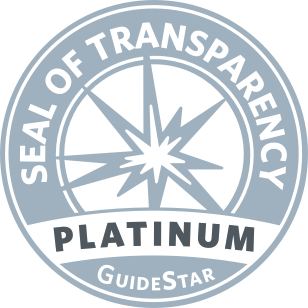Constipation remains one of the most common intestinal problems affecting children – and a source of bewilderment and worry for many parents.
Fortunately, most constipation in infants and children is not caused by any serious underlying medical disease. The challenge, therefore, is for parents to manage constipation, guided by an understanding of why their child experiences difficulties when evacuating stool.
Familiarity with the many products available will help them manage the problem effectively. A basic awareness of the developmental stages leading to successful toilet training can help avoid many crises. Early intervention can minimize the chances of “stool withholding” and its most dreaded consequence: involuntary soiling of the underpants, also known as encopresis. We will briefly review some of these agents, their indications, and possible side effects.
Definition
Constipation can be defined as the passage of painful stools or a reduction in frequency. Note that this definition includes a child even if he has a daily movement, because an important feature is the perceived difficulty in passing the stool. A child can feel constipated even if the stool is soft. Most children tend to get constipated at the time of toilet training, between age 2 and 4 years. In healthy children, the number of bowel movements changes with age and diet. Infants may average four bowel movements in the first few weeks of life. Some healthy, exclusively breast-fed infants may have a bowel movement every 10–14 days (or longer) without any reason for concern. By the age of 4, bowel movements will average one each day.
How common is constipation?
It has been estimated that 10% of children are brought to medical attention because of a defecation disorder. Constipation is the chief complaint in 3% to 5% of all visits to pediatricians.
Straining and grunting in an infant: recognizing dyschezia
Dyschezia (Greek for abnormal evacuation) is often confused with constipation. It is actually a manifestation of discoordinated function of the muscles involved in expelling gas or a bowel movement. Learn more about infant dyschezia
Because of immaturity, the anal sphincters will not relax at the same time that contractions of the colon muscles are trying to push its contents forward. Typically, the infant grunts and strains, turns red, and seems in pain. Eventually, a soft stool or gas is passed, and the discomfort resolves…until next time. The straining is caused by the attempts to overcome the pressure build-up and to successfully overcome the anal spasm.
Parents can help by gently flexing the child’s hip, bringing the child’s knees to his chest and, in some instances, by stimulating the rectum with a lubricated Q-tip. This dyschezia can be troublesome, but reassurance and simple measures are all that is needed until it resolves, usually by the time the baby is 4–6 months old.
When constipation becomes chronic
Acute constipation is usually the result of a drastic change in diet and fluid intake, disruption of usual toileting routines, or pain avoidance as a result of anal irritation, fissuring, or rashes. Correction of the underlying trigger will solve the problem and the usual stooling pattern will resume.
For some children, however, the experience of pain on evacuation becomes a powerful reason to avoid having a movement the next time the urge is felt. Withholding behavior is quite typical and parents should recognize it for what it is: an attempt to keep the stool in so as to avoid pain. The child is not trying his best to push hard and have a movement. Quite the opposite: the stiffening, sweating, turning red, and holding on to furniture are the outward expressions of the concentration needed to squeeze the pelvic muscles and the external sphincter in order to force the stool back up and relieve the sensation of urgency. Often this withholding takes the form of a peculiar posturing (sometimes in a corner), standing on the tiptoes, or wiggling around.
Avoiding the development of chronic constipation is important since it will prevent the overstretching of rectum and the loss of internal sphincter control, which can eventually result in involuntary seepage of stool into the underpants (encopresis).
Some important medical conditions causing chronic constipation
Most chronic constipation is functional, meaning there are no serious medical or structural abnormalities such as a blockage or inflammation.
But certain conditions can be the source of the problem and will be considered and investigated by your physician whenever indicated. In infants and children, anal and rectal anomalies such as imperforate anus, anal narrowing, or an anteriorly misplaced anus (especially in girls) can interfere with the normal passage of stool; these might not be apparent until solids are introduced.
Spinal cord abnormalities or lesions can affect the nerves responsible for sphincter control. Children with spina bifida, tethered cord, or spinal cord tumors can suffer from serious constipation. Under these circumstances, difficulties with urination are usually also present.
Hirschsprung’s disease (aganglionosis) is a relatively rare (1:5000) condition caused by the absence of nerve cells in the intestine. It always affects the internal anal sphincter and extends before it to varying degrees, sometimes even involving the whole colon and parts of the small bowel. In the large majority of patients it presents as intestinal obstruction in infancy; no more than 1% of chronic constipation in older children is caused by Hirschsprung’s disease.
Learn More about Hirschsprung’s Disease
Constipation is a prominent feature in muscle and nerve disorders such as neuronal dysplasia or various forms of pseudo-obstruction syndromes.
The possibility of an endocrine problem (including hypothyroidism or hyperparathyroidism) needs to be considered and can be ruled out with easily available tests.
Finally, it is important to consider whether the child is being given any medication that might be contributing to the problem. For example, certain magnesium-containing antacids, painkillers with morphine, or codeine derivatives are well known constipating agents.
More Medications that can Cause Constipation
🎬 Watch Now
Physician Introduction on Constipation and Irritable Bowel Syndrome – Pediatric
In this presentation, Dr. Samuel Nurko defines constipation and IBS-C, how they are diagnosed, and how constipation and IBS-C can be treated in children today.
Adapted from IFFGD publication Laxatives: A Parent’s Guide to the Successful Management of Constipation in Children #828 by Joseph Levy, MD and Diana Volpert, MD, Division of Pediatric Gastroenterology, Children’s Hospital of NY-Presbyterian, New York, NY, Columbia University Medical Center, NY.







